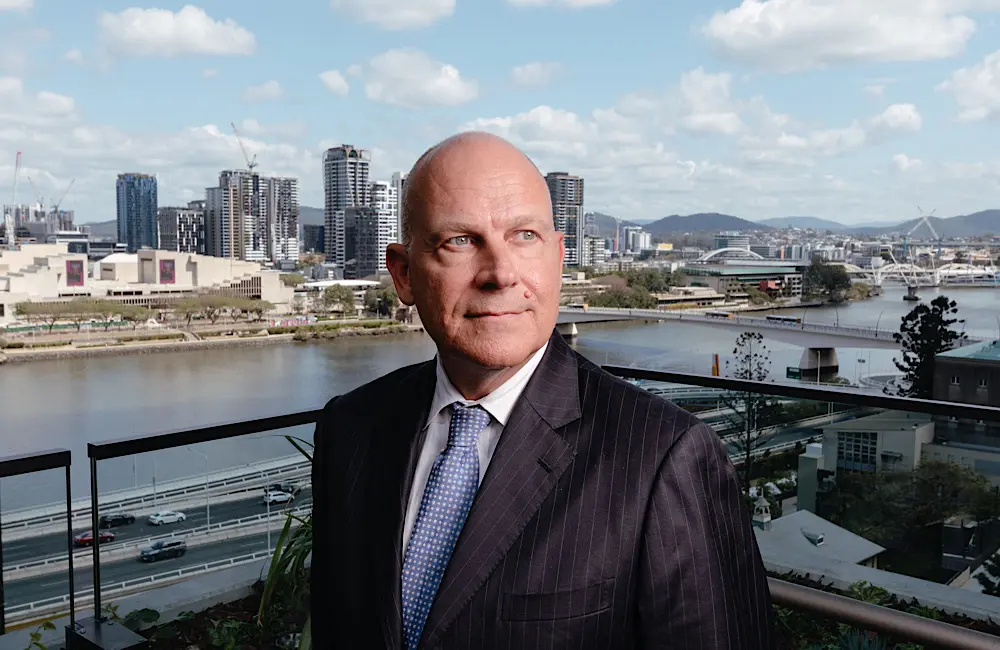Air India is preparing to expand its Australian operations, with more flights and an ambitious transformation that aims to elevate both service quality and network connectivity. Campbell Wilson, CEO and Managing Director of Air India, shared these insights at last week’s CAPA Airline Leader Summit Australia Pacific 2024 in Brisbane.
Speaking to industry leaders, Wilson highlighted Australia as a key market with untapped potential for the airline’s future growth.
With Air India’s non-stop flights between key Indian cities like Mumbai and Melbourne already in operation, Wilson is looking to increase these connections.
Over the past two years, the airline has increased its weekly flights to Australia by an impressive 113%, boosting seat capacity by 50%. And there’s more to come.
The Australian market: A strategic focus
Air India has made significant inroads in Australia, Wilson said. The direct non-stop flights between India and Australia are already seeing strong demand, particularly from India’s large diaspora community in Australia, as well as tourists and students. But this is only the beginning of the airline’s ambitious plans.
“Our non-stop service caters to the demand of the diaspora, VFR [visiting friends and relatives] segments, students, and tourists,” Wilson said. “But we are focused on expanding our customer base.”
In fact, the passenger load factor (PLF) for Air India flights to and from Australia sits at a healthy 87%, showcasing a strong appetite for these direct routes.

Air India also aims to tap into the premium market segment, targeting corporate and business travellers—a shift from its traditional customer base. According to Wilson, “We’re redefining our audience, setting our sights on corporate giants and discerning travellers.”
Growing the route network
One of Air India’s key strategies is to continue expanding its non-stop services to Australia. The airline is currently evaluating more flight options for the upcoming winter and summer schedules. As new aircraft join the fleet, including both leased planes and those from its record order of 470 aircraft, Air India is well-positioned to introduce additional routes between Australia and India.
Wilson is clear that this growth is a major focus: “Air India is exploring opportunities to offer more non-stop flights to enhance frequency and expand [the] network,” he said.
According to Wilson, the airline’s ongoing fleet retrofitting program will ensure a better onboard experience, with nearly 90% of its narrowbody fleet receiving new interiors by 2025. This retrofitting will eventually expand to widebody aircraft by mid-2026, allowing Air India to offer top-tier service across all its flights.
Beyond Australia: Connecting to Europe and beyond
While direct routes between Australia and India are a priority, Air India is also positioning itself as a key player in global travel, connecting Australian passengers to Europe and beyond through its transit hubs in Delhi, Mumbai, and Bengaluru.
The airline is leveraging its Sixth Freedom rights to offer seamless onward connections.
“We’ll be offering convenient connections via transit hubs at Delhi, Mumbai, and Bengaluru,” Wilson said.

“With strategic partnerships, we’ll extend our touch even further, ensuring seamless journeys across the globe.”
This approach not only benefits Australian passengers looking to travel to Europe but also opens the door for Indian travellers to access Australia with ease, boosting tourism and business exchanges between the two countries.
Transforming Air India’s fleet and customer experience
Air India’s transformation plan, known as Vihaan.AI, aims to make the airline a global leader by 2027. Over the past two years, Air India has made considerable progress, placing one of the largest aircraft orders in aviation history (470 planes) and revamping its IT systems with a $200 million investment. The airline has also consolidated its operations, launching a new global brand identity and centralising its workforce at a new headquarters in Gurugram.
“We’ve shed the old skin, embraced a fresh identity, and built fresh digital infrastructure,” Wilson said. Air India is also investing heavily in staff training, with South Asia’s largest training academy and a dedicated facility for maintenance and operations (MRO) set to be key pillars of this transformation.
In addition, Air India is focused on enhancing the passenger experience.
“We are retrofitting our fleet to offer brand new interiors, with over 20,000 new seats to support this refit program,” Wilson said.
By 2026, the airline’s entire fleet will feature upgraded cabins, providing passengers with a modern and comfortable flying experience.
A greener future
Air India is also committed to sustainability, subscribing to the International Air Transport Association’s (IATA) goal of net-zero carbon emissions by 2050.

The airline is focusing on fuel-efficient technology and has joined forces with research organisations to explore the development and deployment of Sustainable Aviation Fuels (SAFs).
By 2030, Air India aims to meet global targets for SAF usage, reducing its carbon footprint across its entire fleet.
“We’re investing in the most modern, fuel-efficient technology available,” Wilson said. With its fleet expansion and retrofitting program, Air India will boast one of the youngest fleets in the industry, further enhancing its sustainability credentials.






